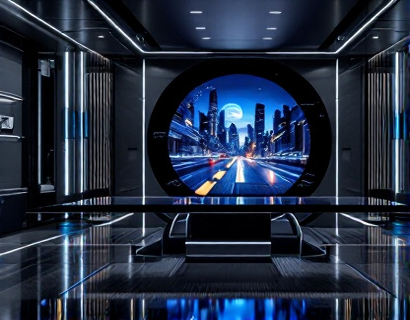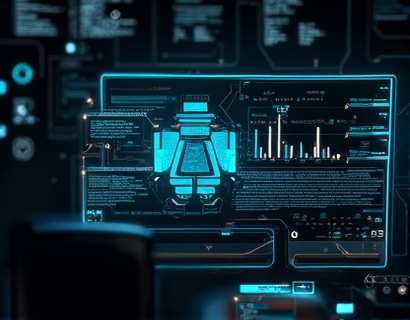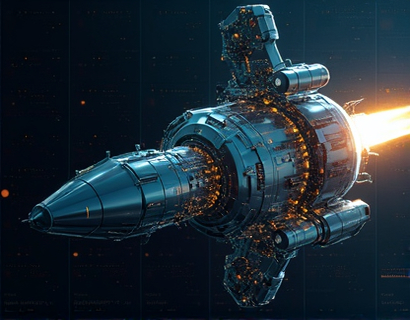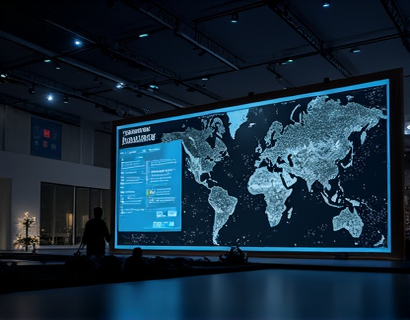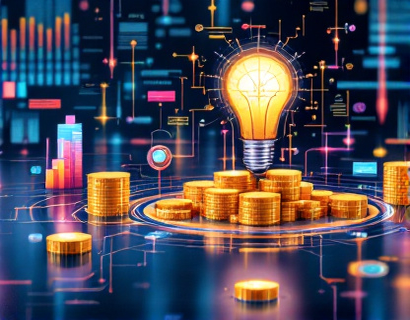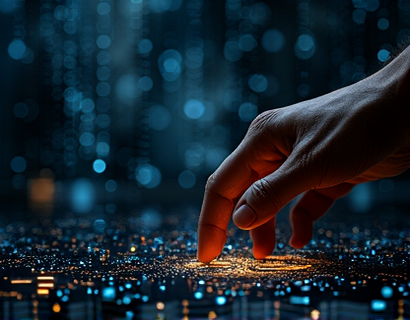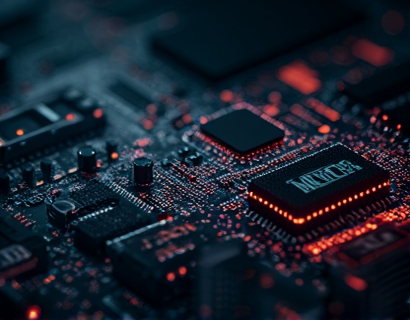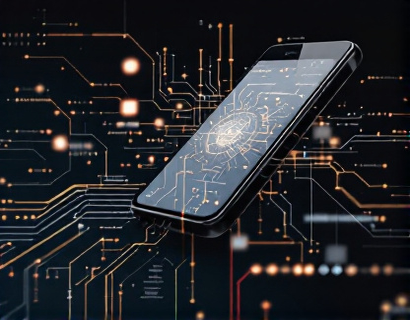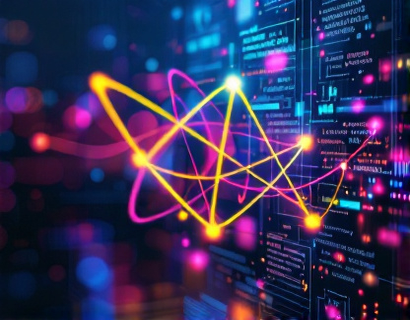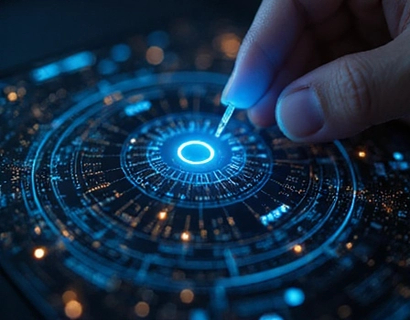Decentralized Innovation: Unlocking Next-Gen Digital Transformation with AI and Crypto Synergy
The digital landscape is undergoing a profound transformation, driven by the synergistic power of artificial intelligence (AI) and cryptocurrency. This convergence is giving rise to decentralized innovations that promise to redefine user experience and engagement across interconnected applications and services. As tech-savvy innovators and early adopters increasingly explore the realms of cryptocurrency, AI, and decentralized applications, it becomes crucial to understand how these technologies are reshaping the future of digital solutions.
Decentralized innovation, at its core, involves leveraging blockchain technology and decentralized networks to create systems that are transparent, secure, and resistant to central points of failure. When combined with AI, which offers unparalleled capabilities in data analysis, pattern recognition, and autonomous decision-making, the potential for transformative applications becomes immense. This article delves into how the integration of AI and cryptocurrency is paving the way for next-generation digital transformation, enhancing user experiences and driving engagement in a rapidly evolving technological landscape.
Understanding Decentralized Systems
To grasp the full potential of decentralized innovation, it's essential to first understand the fundamentals of decentralized systems. Traditional centralized systems rely on a central authority or server to manage and control data and transactions. In contrast, decentralized systems distribute these functions across a network of nodes, each contributing to the overall operation and integrity of the system.
Blockchain technology is the cornerstone of decentralized systems. It provides a tamper-proof, transparent ledger for recording transactions and storing data. The decentralized nature of blockchain ensures that no single entity has control over the entire network, reducing the risk of censorship, fraud, and single points of failure. This inherent security and transparency make blockchain an ideal foundation for building trust in digital interactions.
AI in Decentralized Systems
AI plays a pivotal role in enhancing the capabilities of decentralized systems. By integrating AI algorithms into decentralized networks, we can achieve more intelligent, adaptive, and efficient systems. AI can process vast amounts of data in real-time, identify patterns, and make predictions or decisions without human intervention. In a decentralized context, this means that nodes can collaborate more effectively, optimize resource allocation, and respond dynamically to changing conditions.
One of the key areas where AI and decentralized systems intersect is in the development of smart contracts. Smart contracts are self-executing contracts with the terms of the agreement directly written into code. AI can enhance smart contracts by enabling them to analyze complex data sets, make informed decisions, and adapt to new information autonomously. This not only increases the efficiency of smart contracts but also opens up new possibilities for automated and trustless transactions.
Enhancing User Experience and Engagement
The combination of AI and decentralized systems is particularly powerful in enhancing user experience and engagement. Decentralized applications (dApps) built on blockchain and powered by AI can offer users a more interactive, personalized, and secure experience. Here are some ways in which this synergy is transforming user interactions:
- Personalization: AI algorithms can analyze user behavior and preferences to provide tailored recommendations and experiences. In a decentralized environment, users have greater control over their data, and AI can use this data to create highly personalized interactions without compromising privacy.
- Security: Decentralized systems inherently provide a higher level of security due to their distributed nature. AI can further enhance security by detecting and mitigating threats in real-time, ensuring that user data and transactions remain safe.
- Interoperability: AI can facilitate seamless interactions between different decentralized applications and platforms. By understanding and bridging the gaps between various protocols and standards, AI ensures a smooth and cohesive user experience across the decentralized ecosystem.
- Automation: AI-driven automation can streamline processes within decentralized applications, reducing the need for manual intervention and increasing efficiency. Users can benefit from faster, more reliable services that adapt to their needs in real-time.
Case Studies and Real-World Applications
Several projects and platforms are already leveraging the synergy between AI and decentralized systems to drive innovation and enhance user experiences. Here are a few notable examples:
Decentralized Finance (DeFi)
DeFi platforms are redefining traditional financial services by offering decentralized alternatives powered by AI. These platforms use smart contracts and AI algorithms to provide lending, borrowing, and trading services with greater transparency and accessibility. For instance, AI-driven risk assessment models can evaluate creditworthiness and adjust interest rates dynamically, making financial services more inclusive and efficient.
Supply Chain Management
In supply chain management, the integration of AI and blockchain creates a transparent and traceable system. AI can analyze data from various nodes in the network to optimize logistics, predict demand, and identify bottlenecks. This not only enhances efficiency but also ensures that the supply chain is resilient and adaptable to changes.
Content Creation and Distribution
Content creators can benefit from decentralized platforms that use AI to curate and distribute content based on user preferences. AI algorithms can analyze viewer behavior to recommend content, while blockchain ensures that creators receive fair compensation for their work. This synergy fosters a more equitable and engaging content ecosystem.
Challenges and Considerations
While the potential of AI and decentralized systems is vast, there are several challenges and considerations that need to be addressed to fully realize their benefits:
Scalability
One of the primary challenges is scalability. Blockchain networks, especially those using proof-of-work consensus mechanisms, can struggle with high transaction volumes. AI can help optimize network performance and develop more efficient consensus algorithms, but significant advancements are still needed to support widespread adoption.
Regulatory Environment
The regulatory landscape for cryptocurrency and decentralized technologies is still evolving. Ensuring compliance with existing regulations while advocating for supportive frameworks is crucial. AI can assist in monitoring regulatory changes and adapting systems accordingly, but human oversight remains essential.
User Education
Both AI and decentralized technologies can be complex and challenging for the average user to understand. Educating users about the benefits and functionalities of these technologies is vital for widespread adoption. Intuitive user interfaces and comprehensive documentation can help bridge the knowledge gap.
Future Outlook
The future of digital transformation is increasingly intertwined with the synergy of AI and decentralized systems. As technology continues to evolve, we can expect to see more innovative applications that push the boundaries of what is possible. Here are some key trends to watch:
Increased Adoption of DeFi
Decentralized finance is expected to gain more traction, with more traditional financial institutions exploring blockchain and AI-powered solutions. This could lead to a more inclusive and efficient global financial system.
Advancements in AI for Blockchain
Research in AI for blockchain is advancing rapidly, with new algorithms and techniques being developed to enhance security, scalability, and functionality. These advancements will further solidify the foundation of decentralized systems.
Integration with IoT and Other Technologies
The integration of AI and decentralized systems with the Internet of Things (IoT) and other emerging technologies will create a more interconnected and intelligent world. Smart devices and sensors can feed data into decentralized networks, enabling more sophisticated and automated processes.
Conclusion
The convergence of AI and decentralized systems represents a significant leap forward in digital transformation. By leveraging the strengths of both technologies, we can create more secure, efficient, and user-centric digital solutions. As the ecosystem continues to evolve, it is essential for innovators, developers, and users to collaborate and embrace these advancements. The future is decentralized, intelligent, and full of endless possibilities.









